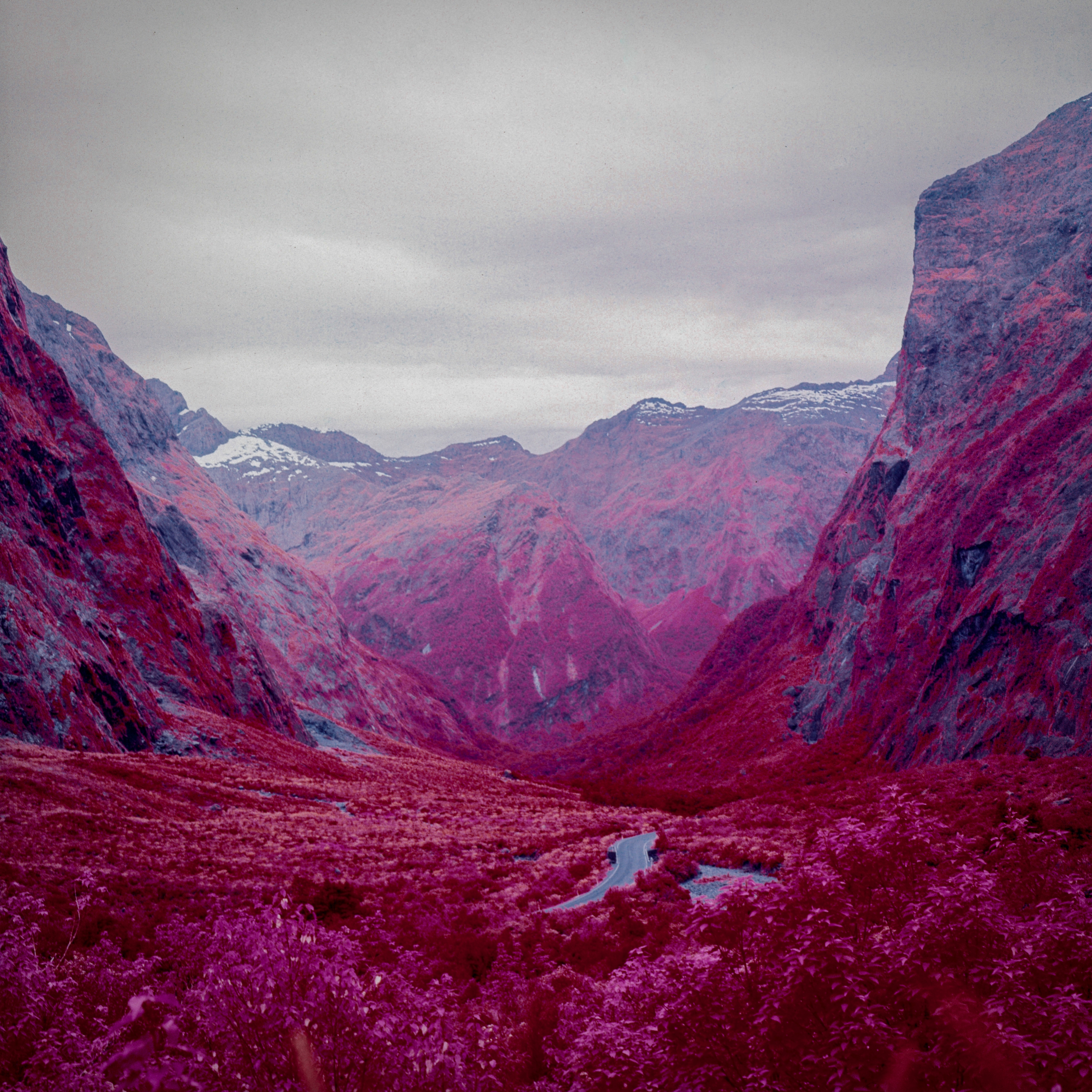Last Updated on 12/27/2021 by Chris Gampat
“I wanted to have the experience of shooting Aerochrome at least once while I still had the chance,” the photographer Jason De Freitas tells me. He bought his first rolls in 2018, saving them until he found a landscape worthy of the now-famous discontinued infrared-sensitive film and its signature magentas and hot pinks. In the end, he packed his bags and traveled to New Zealand’s South Island, known for its towering peaks, lush rainforests, and secret waterfalls.
You can view this article and much more with minimal ads in our brand new app for iOS, iPadOS, and Android.
“One particularly memorable moment was my Gertrude Valley hike,” the artist remembers. “It was quite a difficult hike (for me at least), especially the very steep sections towards the peak, but the payoff was absolutely worth it. The vantage point was one of the best I’ve ever experienced, and it made me immediately forget about how difficult the journey was.”
Stretching out before him was Milford Sound, first discovered by the Māori people more than a thousand years ago. In his photographs, the land is drenched in reds and plums, transforming into the surface of another planet. We asked De Freitas, who also specializes in analog astrophotography, about his foray into the mystical world of infrared.
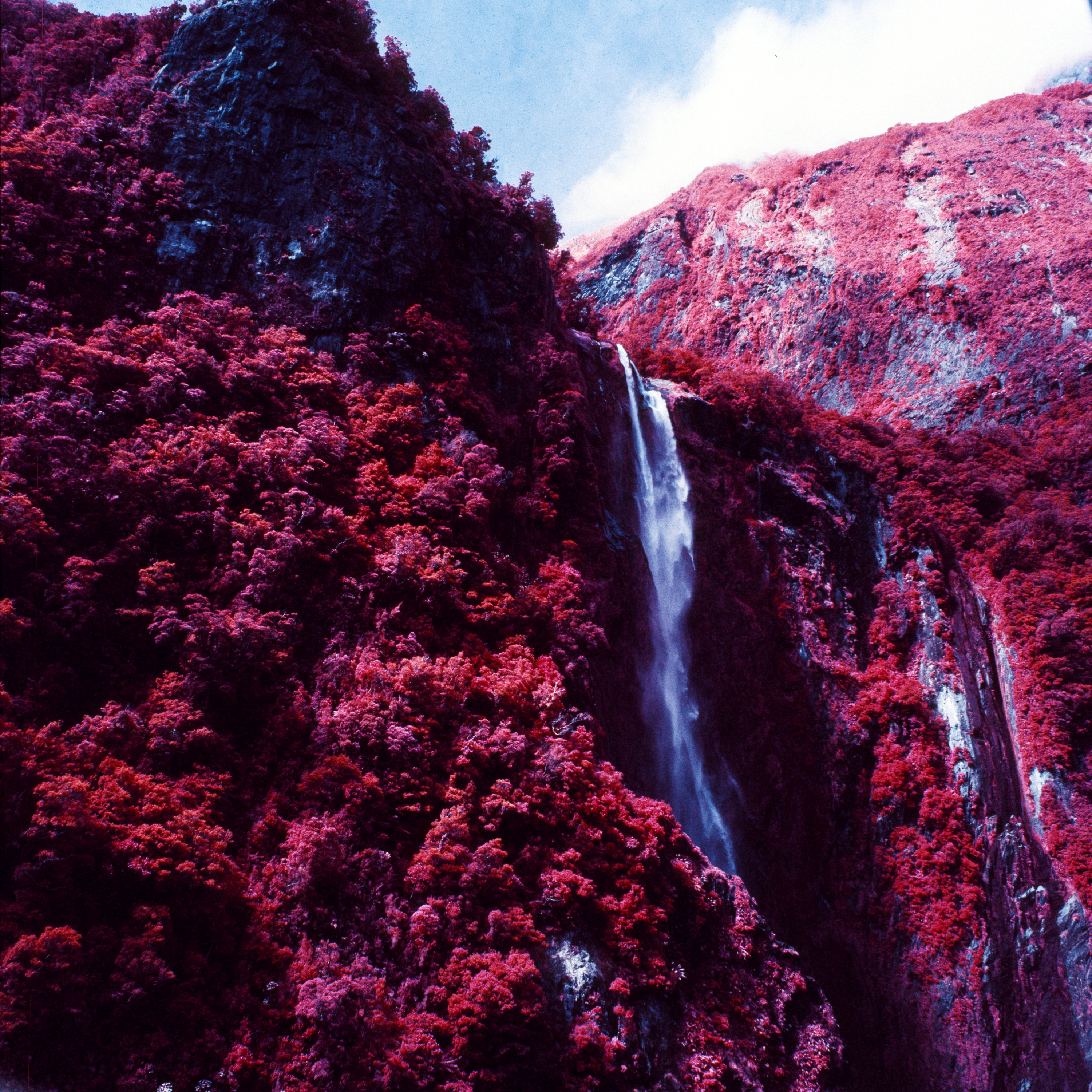
The essential Gear of Jason De Freitas
- Bronica SQ-A
- Zenzanon PS 50mm f/3.5
- 80mm f/2.8
- Hoya orange YA3 filter
De Freitas tells us,
“All of my Aerochrome photos have been taken with my Bronica SQ-A. It’s a 6×6 medium format camera, which is why all of these images are square format. I’m a big fan of this camera, as it’s quite a bit more portable compared to most 6×7 medium format systems, and it has never let me down. I use the Zenzanon PS 50mm f/3.5 and 80mm f/2.8 with this camera, which gives an equivalent 35mm focal length of about 28mm and 44mm, respectively.
“One of the most essential pieces of equipment when shooting Aerochrome is filters. The film stock is sensitive to the regular color spectrum, but its sensitivity also extends into infrared frequencies. It is especially sensitive to blue light, and therefore a filter is needed to balance out the blues with the infrared that shows up as reds, magentas, and pinks. It is typically shot using a yellow, orange, or red filter to give varying hues and contrasts. The choice is purely subjective, and I use a Hoya orange YA3 filter for all my Aerochrome images.”
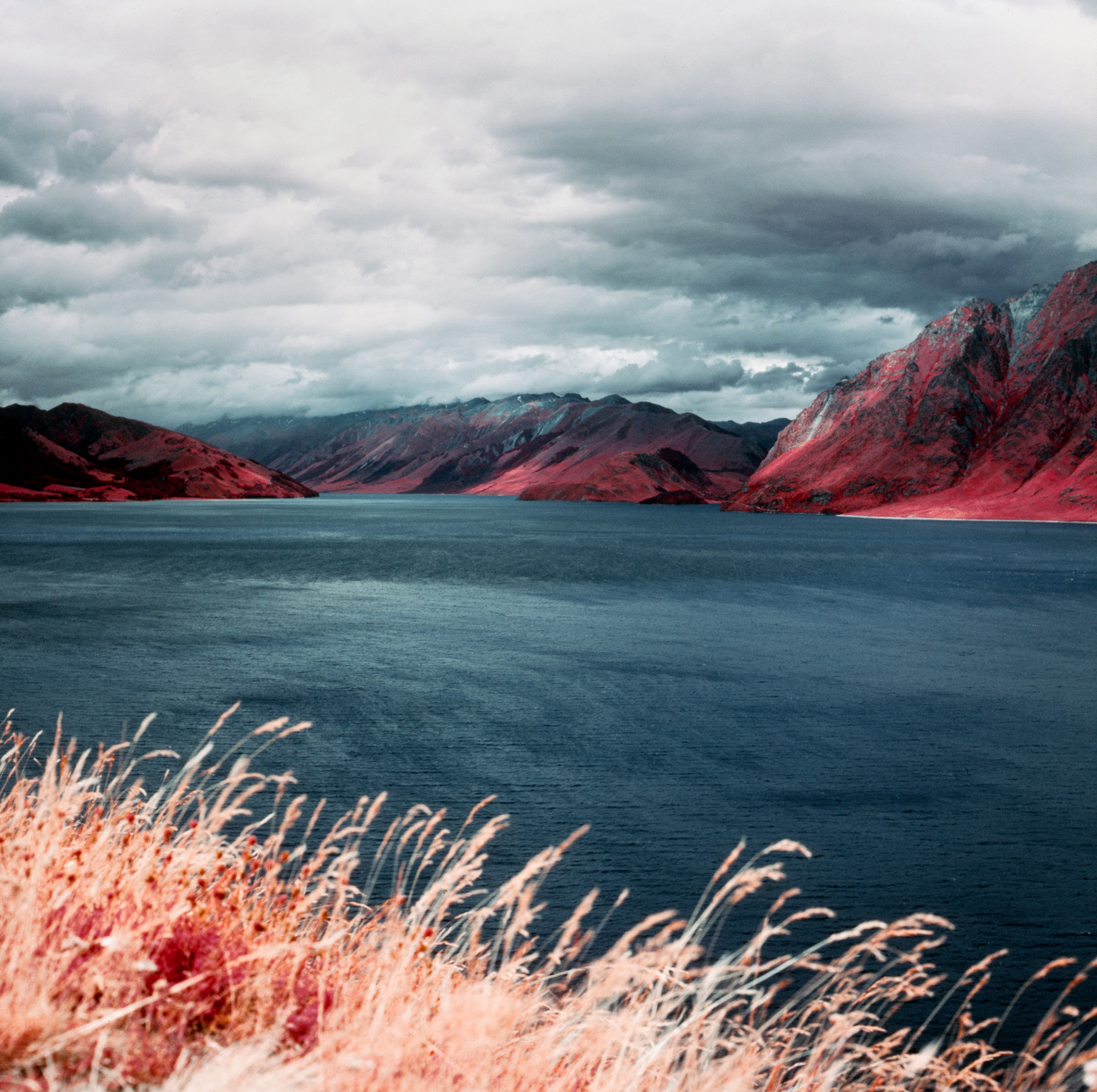
Phoblographer: You’re well-known for your astrophotography, but these images capture the magic of terrestrial landscapes. How did you get started in landscape photography?
Jason De Freitas: Astrophotography was my original motivator to start learning photography, but it made much more sense to learn general photography techniques before investing in such a gear-heavy genre. I really started to focus on photography after I had moved from a large city to a smaller coastal town here on the east coast of Australia. Landscape photography was just inevitable. I enjoy exploring the areas around me and discovering scenic landscapes.
Phoblographer: How did you get your hands on this supply of Aerochrome, and how much do you have left?
Jason De Freitas: In 2018, it was still quite easy to find online, but I was completely aware that it was in limited supply (the price makes that very obvious). When I developed my first rolls of it, I immediately fell in love with the film, so I decided to buy more of it. It’s now significantly harder to find; I have about twenty rolls of it left in 120 as well as some 4×5 sheets in my freezer that I’m saving for a future project.
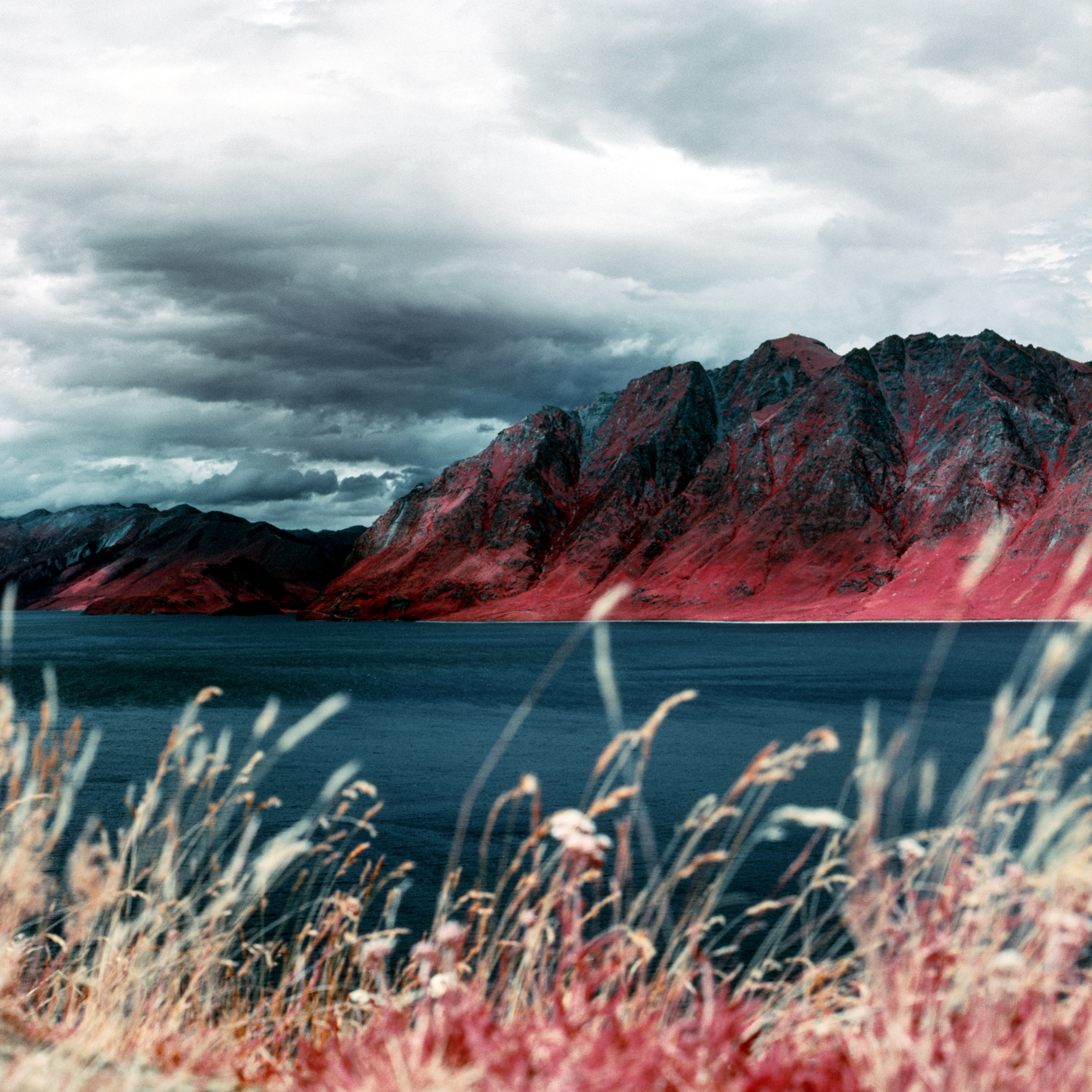
Phoblographer: What brought you to New Zealand’s South Island, and what makes this place particularly well-suited to infrared photography?
Jason De Freitas: The South Island really is a landscape photographer’s dream, and it was very different from a lot of the landscapes where I live. Incredible mountains and valleys everywhere you go. That’s what drew me there, and, on a personal level, that’s why infrared works so well–it makes everything look otherworldly, which perfectly matched my experience.
Phoblographer: How long did you stay?
Jason De Freitas: I stayed in and around Queenstown and was there for only a week. I was traveling with a friend of mine; we hired a car and drove to as many places as we could in that time, including Milford Sound for a couple of days. I did a lot of tourist activities, such as sky diving, but my time in New Zealand was mostly spent driving to different areas to go hiking–while stopping way too often for me to take photos.
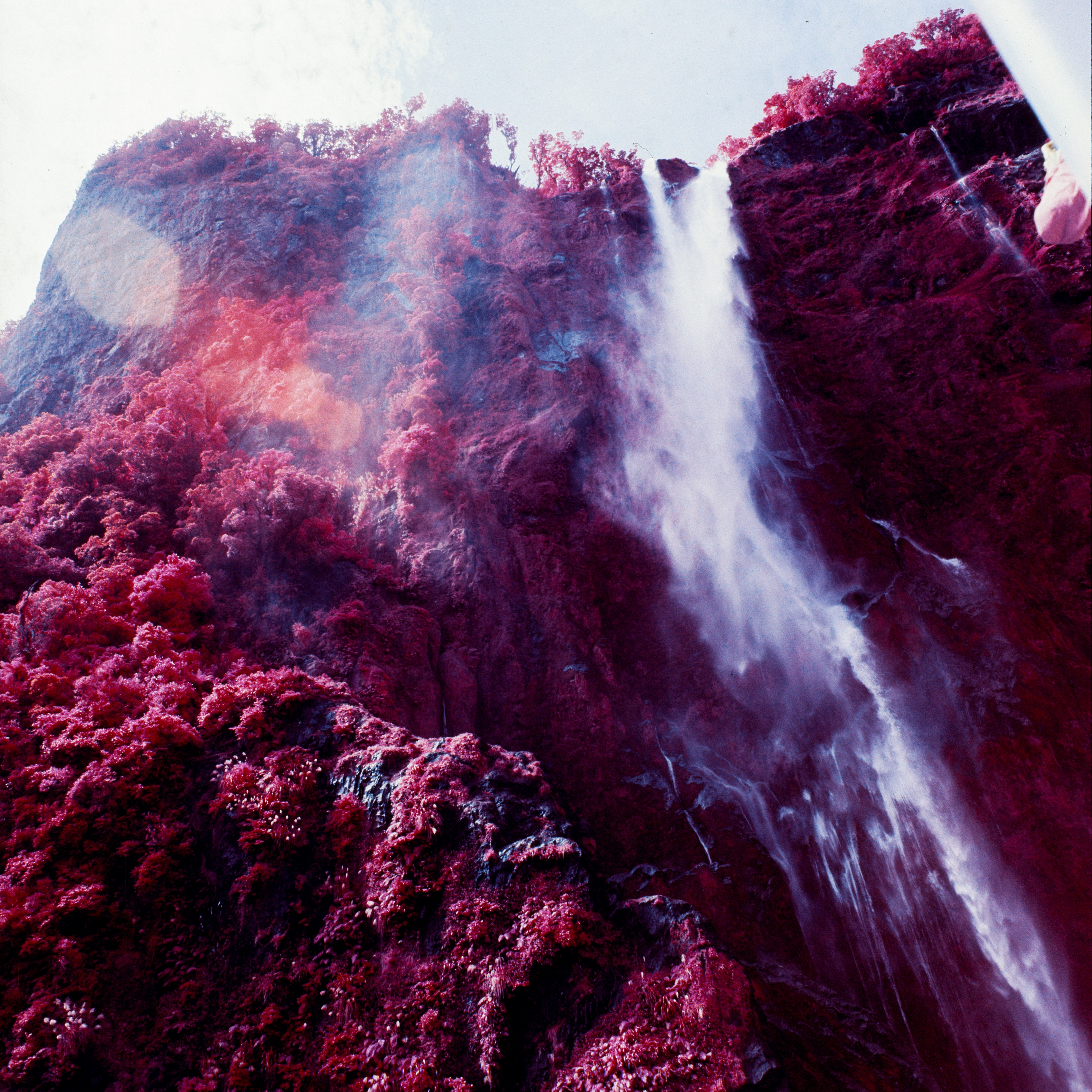
Phoblographer: What’s your most powerful memory from the South Island?
Actually, one of the most memorable moments for me was the flight into Queenstown from Sydney. The descent path is right over the Milford Sound area, and the view from the air is spectacular. I would love to charter a flight there one day and take some aerial photographs.
Phoblographer: The South Island is home to an astonishing diversity of flora and fauna. Did you encounter any wildlife that caught your eye?
Jason De Freitas: On the top of my hike to Gertrude Valley, there was a very friendly Kea parrot. They’re famous for being extremely curious and stealing items from tourists. This one definitely wasn’t afraid of getting close, so I was being very cautious with my camera gear.
The lupins around Lake Tekapo are some pretty iconic flora in the South Island. While I do believe they’re an invasive species, they provide such a beautiful burst of color to the mostly green and blue landscapes (if you’re not shooting Aerochrome). They actually feature in the foreground of my Knob’s Flat photo, and I enjoy the way they blend in rather than stand out against the other colors.
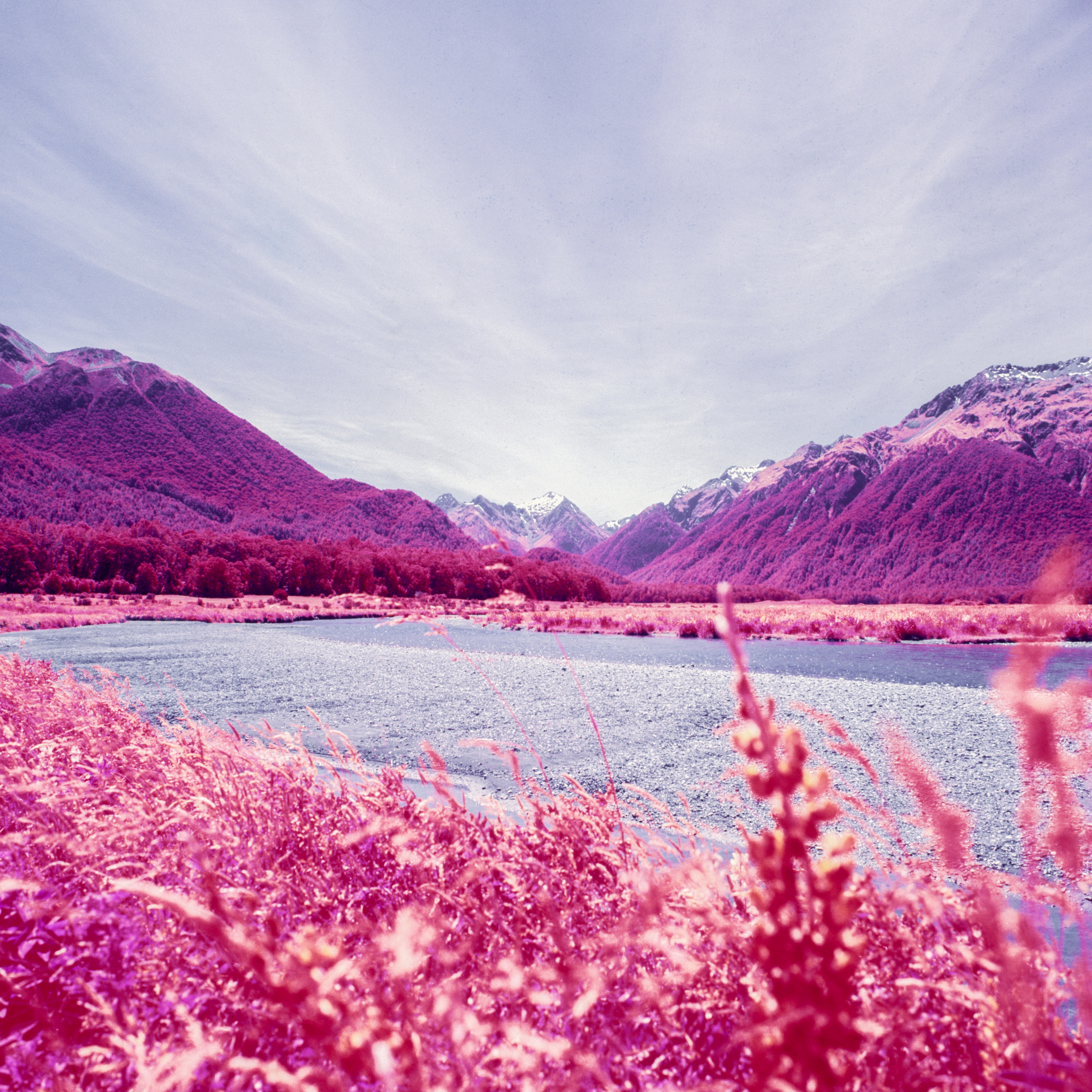
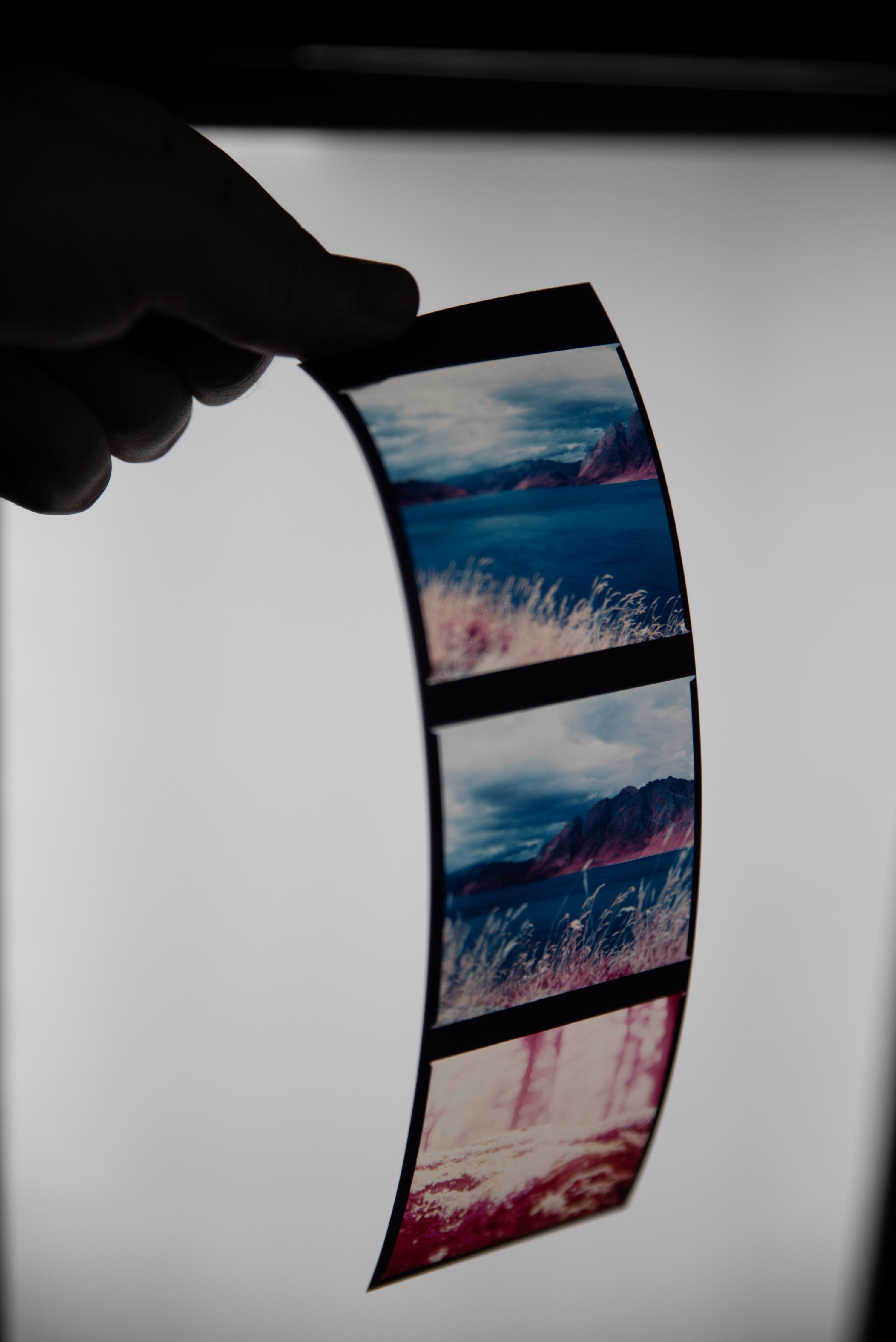
Phoblographer: You self-developed this film–is that right?
Jason De Freitas: Yes, I develop and scan all of my own work. Aerochrome is a slide film (also known as positive film), which is developed in the E6 process, a different process from negative color film (C41 process). The main challenge with this process is how sensitive it is to temperature. You are supposed to keep the developer chemicals to within ±0.5°F; however, the popular solution is to use a sous vide machine to regulate a water bath. Using this technique, developing color film is no harder than black and white, in my opinion–just a few extra steps. It’s just a routine of pouring different chemicals into a developing tank at a certain temperature for a specific amount of time, in a specific order.
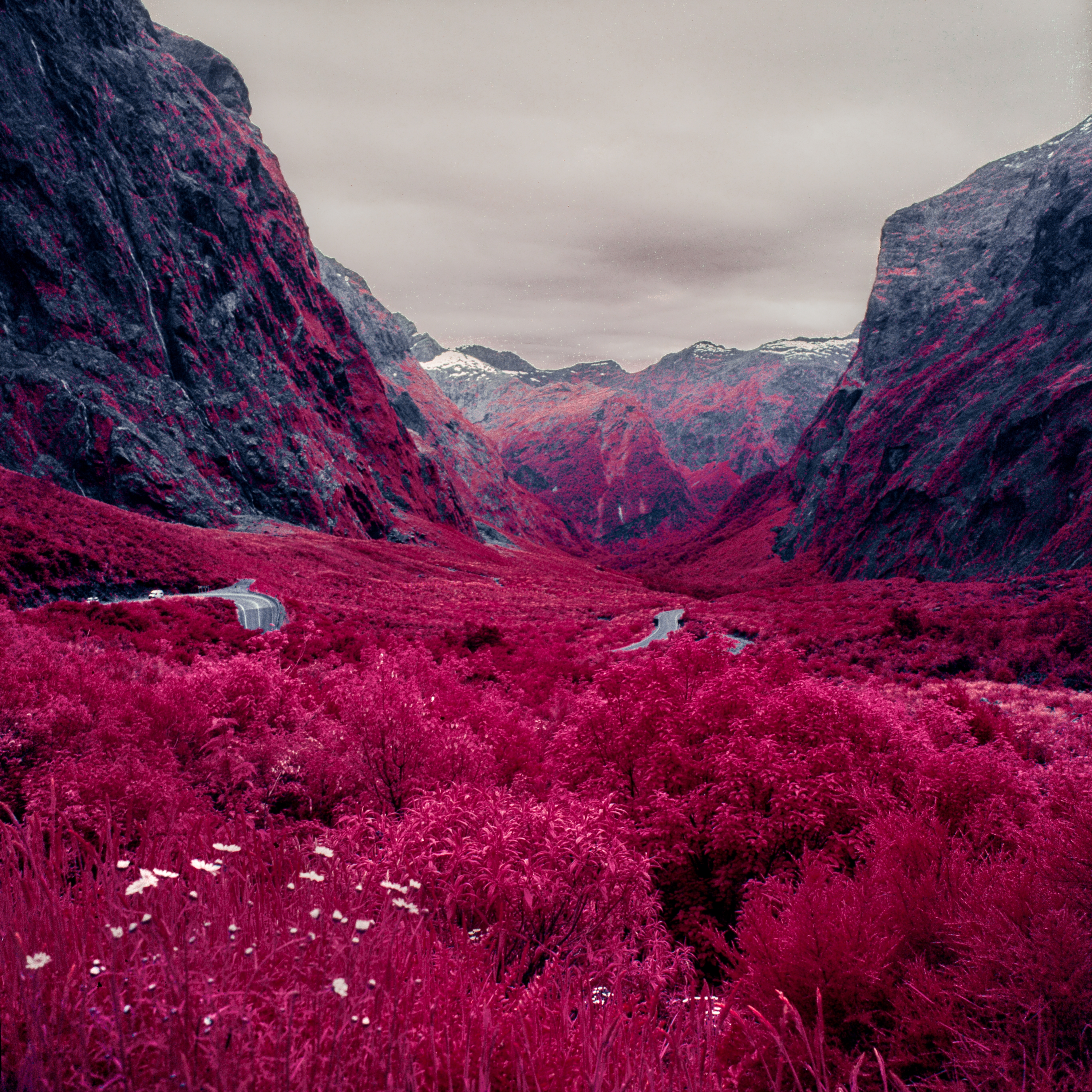
Phoblographer: This film is expired and unpredictable. Have you had any happy accidents while using it?
Jason De Freitas: It is very difficult to predict how infrared will respond in a particular scene since we can’t see it! Typically, foliage reflects a lot of infrared, so you can expect reds, magentas, and pinks in lots of flora. It generally gives you a well-exposed image or a terrible one that’s completely magenta-shifted if you expose it wrong. This is a bit of a stretch, but in a way, every good image that I get is a happy accident since I can only guess what the final image will look like.
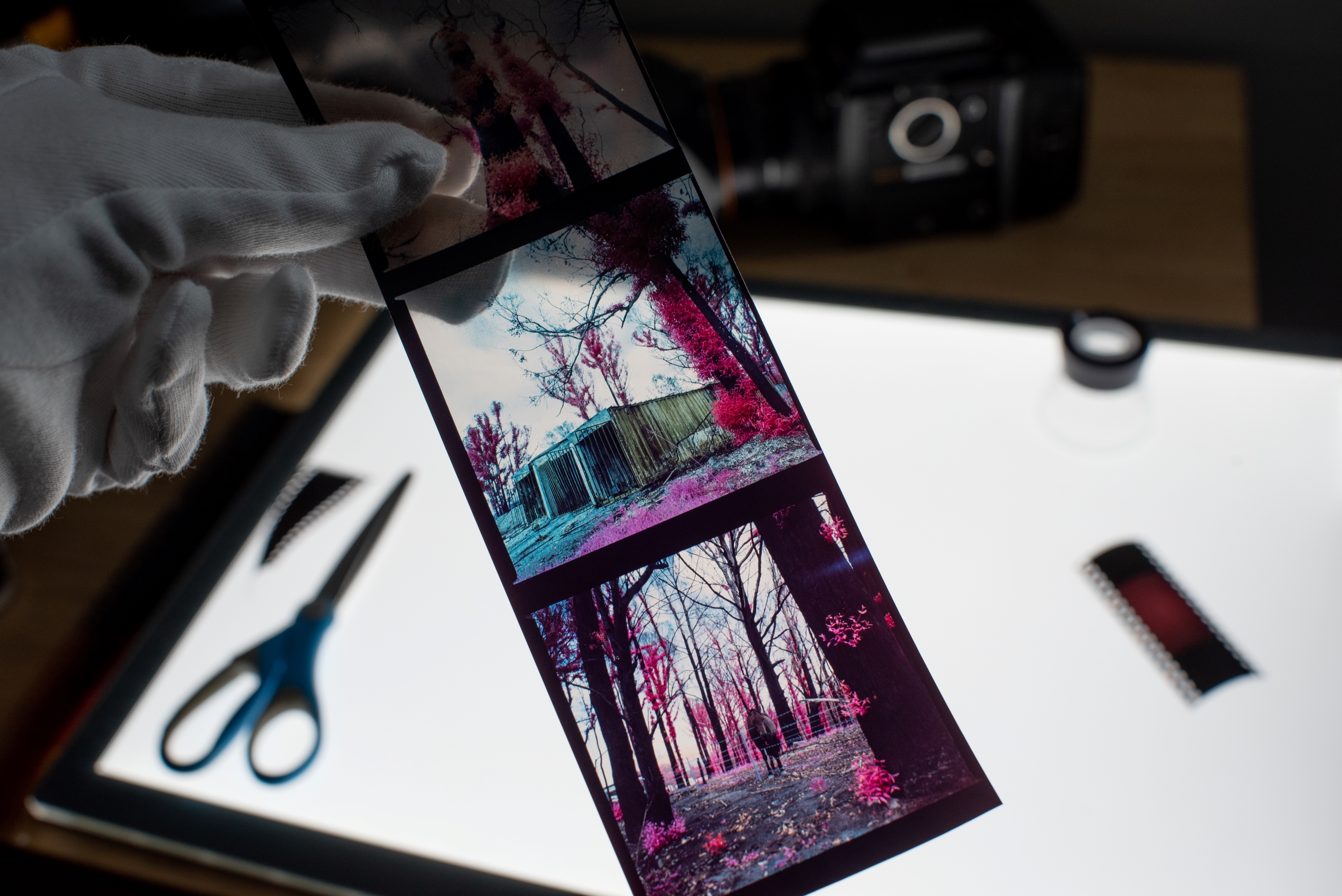
Phoblographer: Has this process and project influenced your appreciation of or relationship with the natural world, even closer to home in Australia? What lessons will you carry with you after all the Aerochrome is gone?
Jason De Freitas: The scarcity of Aerochrome has really affected the way I approach photography, and, in turn, that has definitely influenced my relationship with the natural world. I feel there’s a lot of pressure to not waste my remaining stash of Aerochrome on trivial shots. I want to use Aerochrome on projects that are important, where the uniqueness of the process can bring attention to worthwhile subjects.
This is really the underlying motivation I had when I shot Still Burning, a series of photographs focusing on the regrowth in bushfire-affected regions near where I live after the devastating 2019/2020 fires in Australia. The unsustainable nature of Aerochrome is an eerie reminder of the threats our natural world faces.
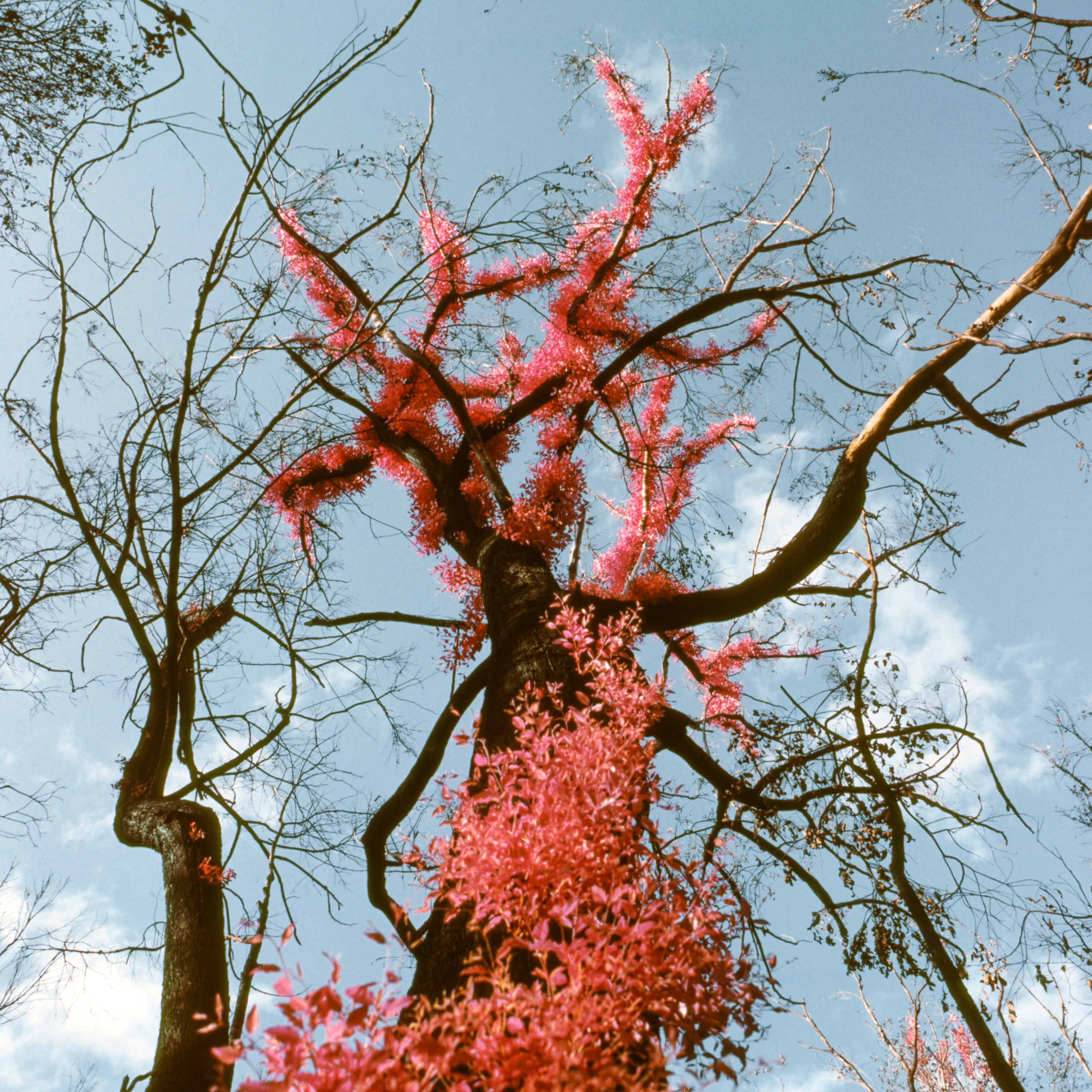
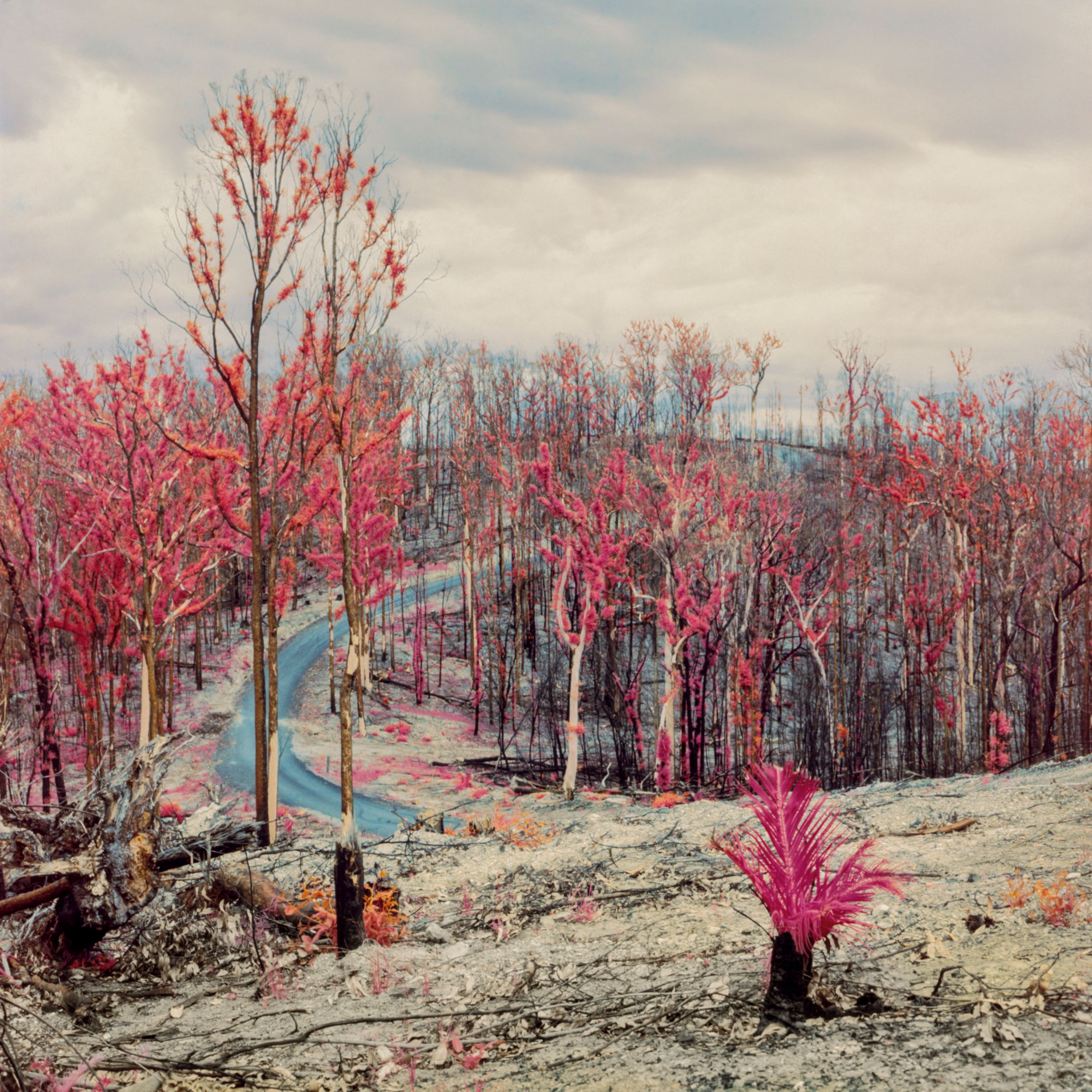
Phoblographer: More photographers have started “replicating” the look of Aerochrome film digitally. Do you think it’s possible to get the same effect digitally, or will it be gone once the world’s Aerochrome runs out?
Jason De Freitas: I think you can certainly get close, especially with IR or full-spectrum modified digital cameras and lots of post-processing. I’ve even seen some techniques that combine tri-color photography with black and white infrared film (which is still being produced) that were promising.
I’m very biased because I shoot film for the process and tangible elements. Even if you can replicate it very closely with digital techniques, it will never have the elements that truly make it special to use, and, to me, that’s the magic of seeing your slide on a light table for the first time. I’m very happy that Aerochrome has made enough of a mark on photography that people want to emulate it, and I will always be grateful that I got to use the real thing while I had the chance.
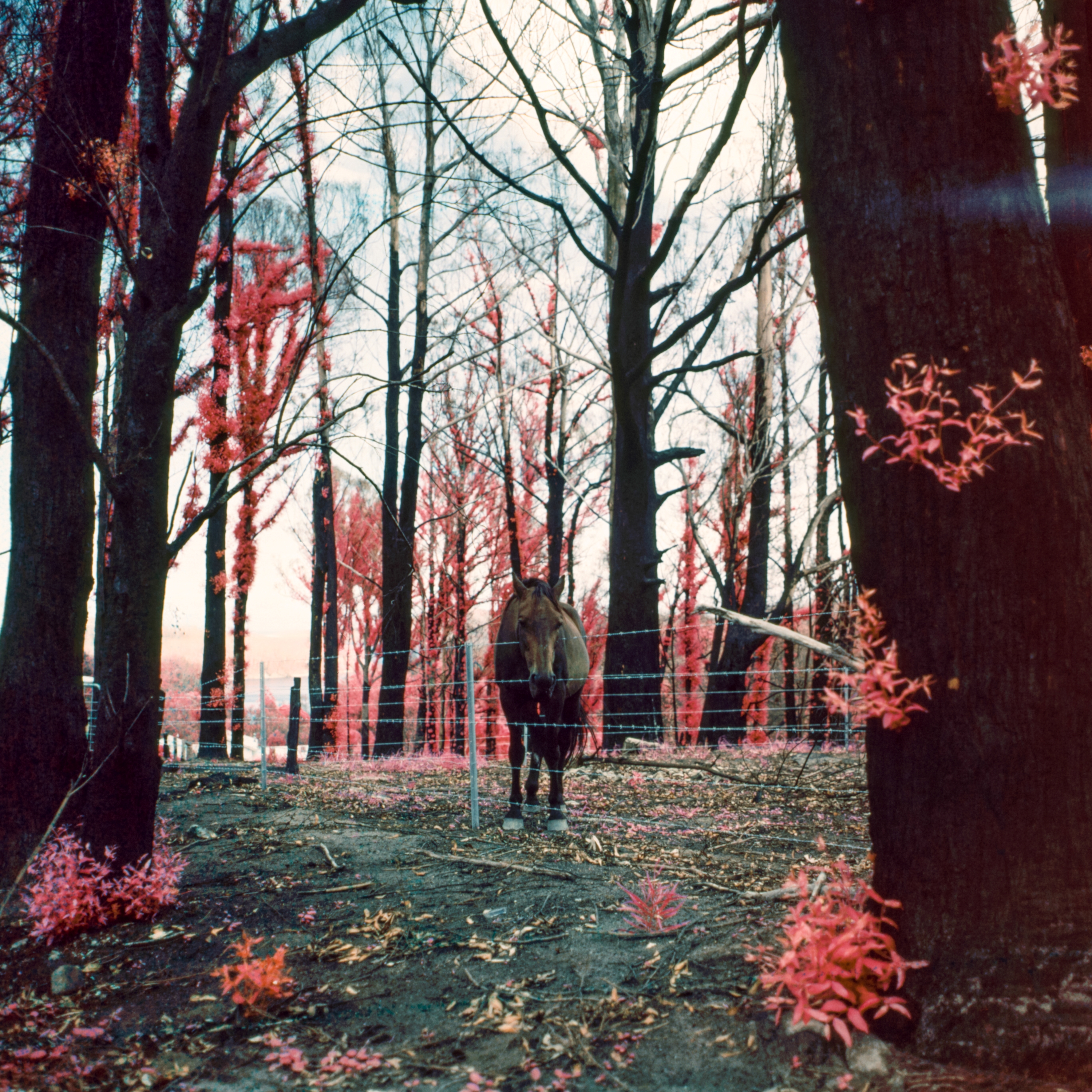
For more from Jason De Freitas, visit his website. Follow along on Instagram at @jase.film. Shop prints here.


